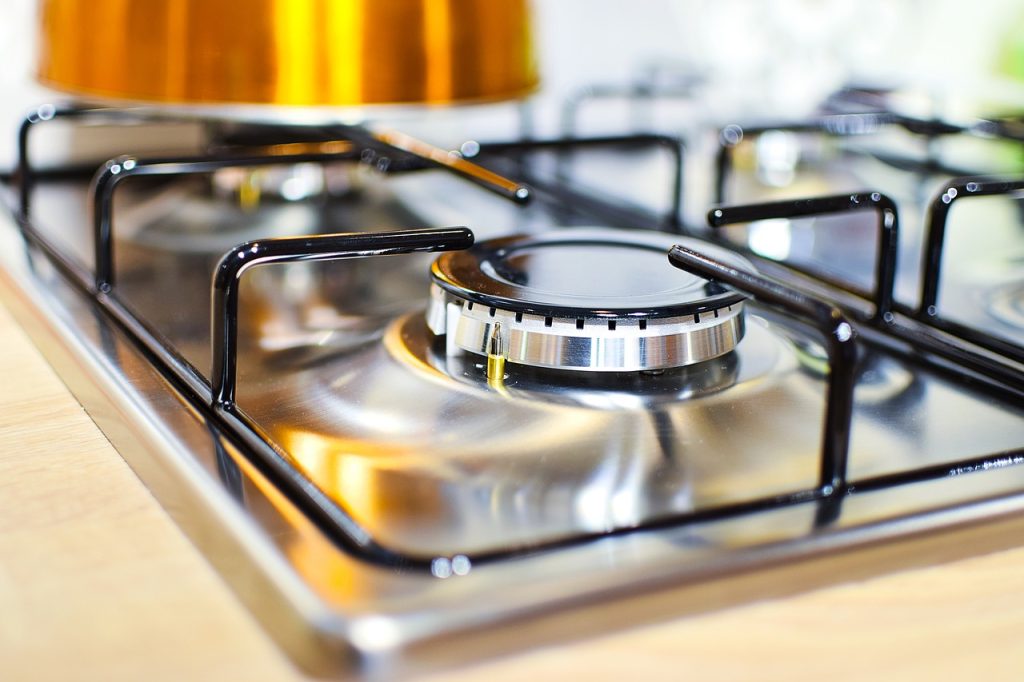
- High Country Conservation
- April 3, 2023
- Ask Eartha
Dear Eartha, I’ve heard a lot about induction cooking, but can anything really be better than gas?
What’s better than cooking with gas? How about breathing clean air? Americans, on average, spend 90% of their lives indoors. That may come as a surprise since so many Summit County folks don’t skew “average American” when it comes to outside time. But when you think about sleeping, working, eating, cozy nights in front of the fire — well, it all adds up.
This means that we’d want our indoor environments to be pretty healthy and safe places to hang out, right? So here’s another shocker: Indoor air quality isn’t regulated in the same way that outdoor air quality is. According to the Environmental Protection Agency, concentrations of some air pollutants can be as many as two to five times higher indoors than outdoors. And one of the biggest contributors to poor indoor air quality might be innocently installed in your kitchen. Yep, I’m talking about your gas stove.
Cookin’ up some controversy
The U.S. Consumer Product Safety Commission, a government agency tasked with ensuring that products are safe for use, caused some mild uproar when it announced that all options were on the table for regulating new gas stoves, including a potential ban. No, the government was never going to enter your home and forcibly remove your gas stove. But it was expressing legitimate concerns about the safety of these appliances.
Regardless of the emotional connection you might have with your gas stove, the fact is that when you cook or bake, you are burning natural gas inside your home. And decades of scientific research have shown that when combusted, natural gas releases emissions that are harmful to human health. Of particular concern are nitrogen oxides, known respiratory irritants. Testing completed by Consumer Reports found that gas ranges release nitrogen dioxide at levels above public health recommendations. In some situations, levels exceed what’s legally allowed outside. A study published in the “International Journal of Environmental Research and Public Health” found that nearly 13% of childhood asthma cases in the U.S. can be linked to gas stove use.

Allez cuisine!
Over 40 million U.S. households cook with gas, and it’s long been considered the gold standard because of its responsiveness and speed relative to older electric models. But, to channel the Iron Chef, does gas really reign supreme? Let’s welcome to the kitchen stadium: induction ranges.
Induction ranges and cooktops are powered by electricity, which makes them better for both the climate and your health, but these aren’t the red-hot electric coils of years past. Instead, these modern marvels work with magnets. When a burner is turned on, an electromagnetic field below the glass heats up and transfers that heat directly to your cookware. This makes cooking faster and — gas-lovers take note — more precise, even at low and high temperatures. And while it’s true that only certain types of cookware will work with an induction cooktop (stainless steel and cast iron included), it’s a far more efficient method of cooking because there’s little wasted heat. Another bonus? The cooktop doesn’t itself get hot, keeping you safe from unintended burns. They’re also a lot easier to clean. Even professional chefs are making the switch.
#PassGas
For those curious about induction cooking, the High Country Conservation Center offers rebates of up to $500 for locals making the switch from gas. In the meantime, keep yourself and your loved ones safe by using your kitchen’s vent fan (if you’ve got one) while you’re cooking.
And if you’re reading this thinking there’s no way you’d give up your gas stove, you might have been duped by the natural gas industry. In fact, industry folks and appliance manufacturers have known for over 40 years that gas ranges cause indoor air pollution, and they even developed solutions to mitigate the problem. But they never sold the healthier models because there was no demand for them (likely because no one told consumers they should be concerned). Now, companies are paying influencers to promote cooking with gas on their social media channels. Turns out #CookingWithGas is a real thing. Me? I’d rather #PassGas.
